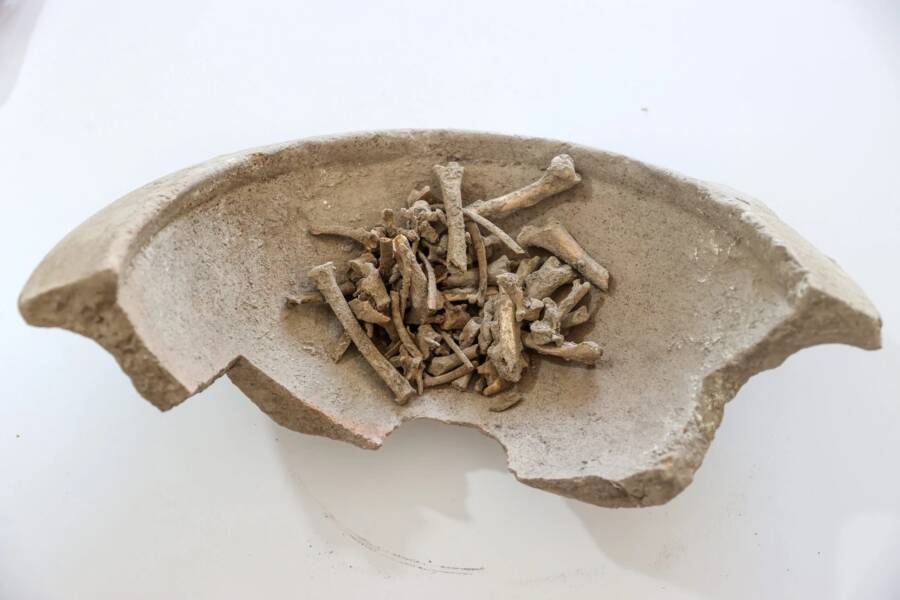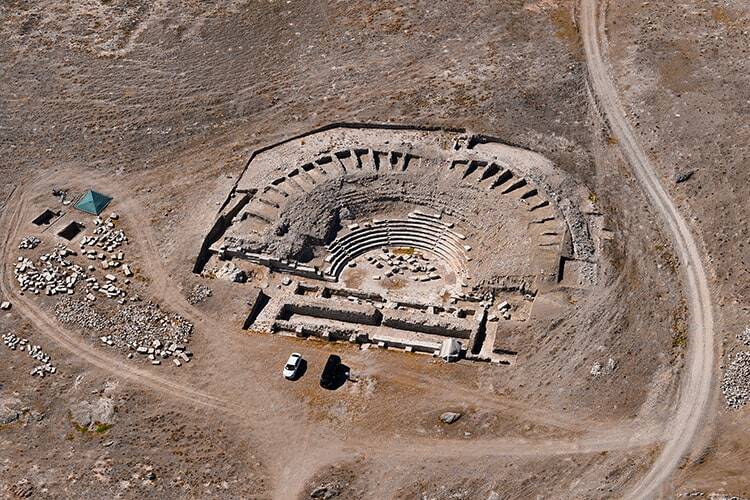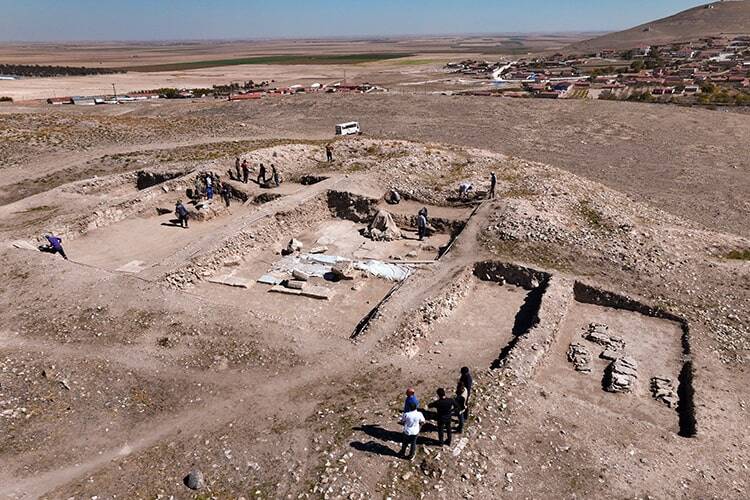During excavations in the foothills of the Bozdağ Mountains, researchers unearthed pots featuring lids inscribed with dog skulls — and containing the headless remains of infants who were buried in what's believed to be a previously unknown religious ritual.

AA PhotoInfant bones found inside earthenware vessels in well graves at the ancient city of Savatra in Türkiye.
During archaeological excavations in Türkiye at the ancient city of Savatra, researchers came across infant skeletons buried inside clay pots — and they were missing their heads. They were part of what archaeologists believe to be ritualistic burials some 1,500 years ago, though the exact nature of the rituals remains unclear.
Indeed, researchers noted that this type of burial was “extremely rare” and that it offers unique new insights into this region during late antiquity.
Archaeologists In Savatra Uncover Ritual Burials Of Headless Infants Inside Clay Pots

AA PhotoThe clay pots that contained the skeletal remains of infants and animals.
Since 2021, archaeologists have been working to excavate the ancient city of Savatra in Konya, Türkiye. Located at the foothills of the Bozdağ Mountains, Savatra is considered to be a highly important archaeological site, as it was mentioned often in the works of ancient geographers. The geographer Strabo, for instance, mentioned Savatra and made note that the city had some of the deepest wells in the world.
Under the direction of Associate Professor İlker Işık of Selçuk University, the research team has worked meticulously to excavate the site and uncover its mysteries since the initial digging began in 2021.
Perhaps most notably, Işık’s team has unearthed two decorated clay pots containing the headless skeletons of infants. The pots were found in well graves, located just south of a Roman-period theater. The pots’ lids were also adorned with dog skulls — a rare practice, especially in Anatolia.
Now, researchers are working to analyze these macabre remains and gain new insights into ancient ritual practices in the region.

AA PhotoAn overhead view of the excavation site at Savatra.
“This is an extremely rare type of burial, likely tied to religious rituals,” Işık told Türikye Today. “The pots are in almost perfect condition, and the inclusion of both infant and dog remains suggests that these burials held significant spiritual or symbolic meaning.”
Researchers have conducted preliminary geo-radar scans on the findings, which revealed the location of a second burial site just under 10 feet from the first. This second site contained additional infant and animal skeletons, including foxes, cattle, horses, and donkeys, raising more questions about the importance of animals in Savatran burial rituals.
“Following this exciting work, we are planning to expand the area further,” Işık told Anatolian Archaeology. “In this context, we have conducted physiological studies. When we examined the ceramic samples, we found artifacts dating from the Early Roman Empire Period to the Late Antiquity, covering a time span of about 1500-1600 years ago. After reaching other well graves, we hope to encounter new findings that will contribute to the cultural history of Anatolia. Each finding may potentially push the historical timeline further back.”
Further Discoveries About Savatra Could Change Historians’ Understanding Of Roman Anatolia

AA PhotoThe Roman theater at Savatra.
As fascinating as the infant burials are, they are not the only focus of research at Savatra. Archaeologists have also decided to focus on other key areas of the city — particularly a large burial mound, the foundations of a church, and a Roman theater.
Originally a Hittite settlement, Savatra later became a Roman and Byzantine city, known for its place along the Roman road system connecting major cities like Iconium (modern-day Konya). Archaeological excavations at the site have now uncovered remnants of city walls, fortifications, and religious structures, including early Christian basilicas.

AA PhotoArchaeologists have been excavating the ancient city of Savatra since 2021.
The work at Savatra has revealed new information about the region’s shifting cultural and religious landscapes some 1,500 years ago. Artifacts found here include Roman coins, pottery, and religious iconography, shedding light on the city’s role in trade and communication networks. Excavations also focus on understanding the layout of the city, while ongoing efforts are in progress to preserve its remains from environmental degradation.
Overall, the site contributes to the broader understanding of Anatolia’s ancient history and its connections to the Roman Empire around the time that it fell.
After reading about this fascinating ritual burial in Türkiye, read about some other weird death rituals from around the world. Then, learn all about Tibetan sky burial.





